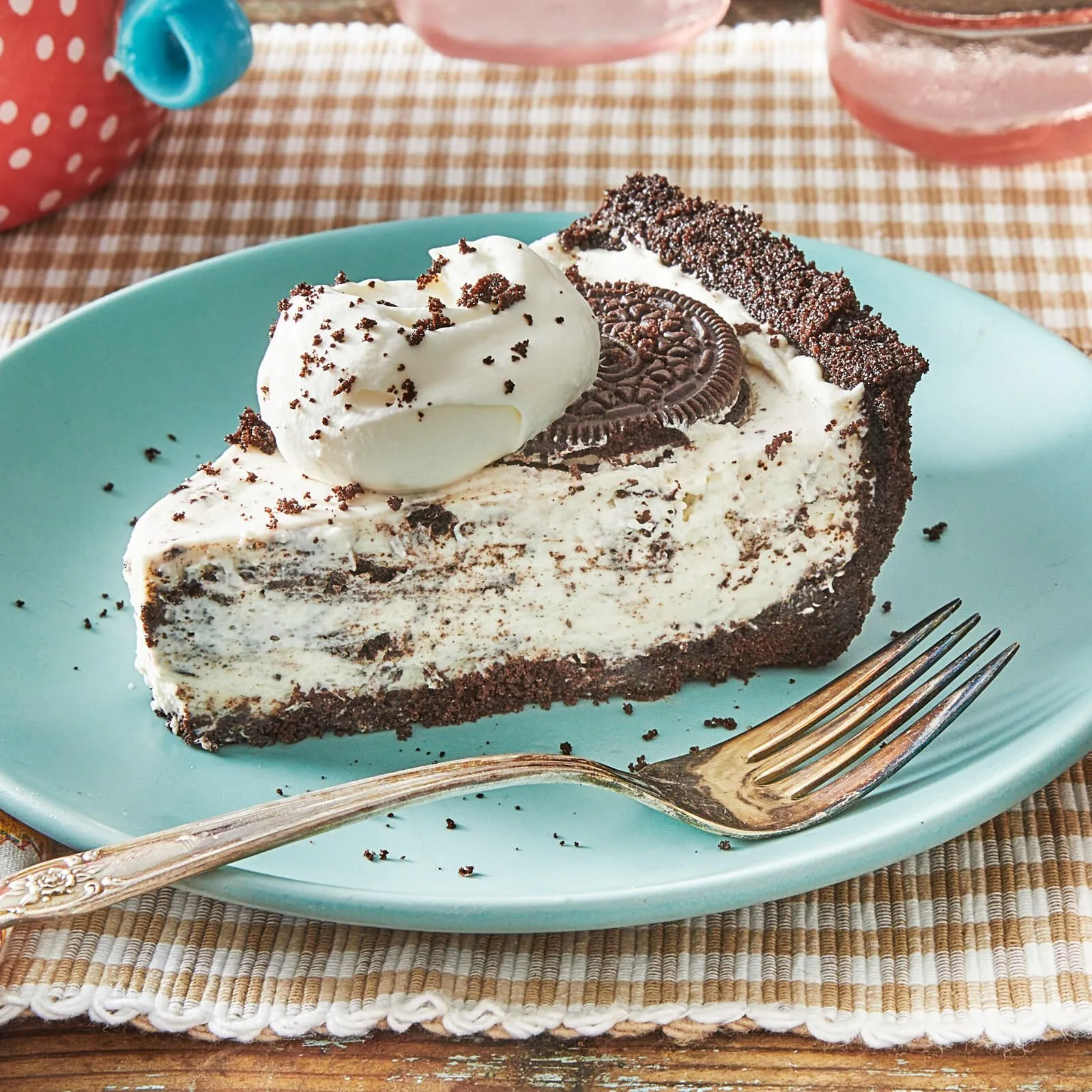If you have a sweet tooth, you know how hard it can be to stick to a weight loss plan when sugary temptations seem to be everywhere. But the good news is that you don’t have to completely avoid desserts to reach your health goals. With some simple substitutions and strategies, you can still enjoy sweet treats in moderation as part of a balanced diet for weight loss.
Why Balancing Desserts and Weight Loss Goals Matters
Losing weight comes down to creating a calorie deficit by burning more calories than you consume. It’s not about avoiding an entire food group or swearing off dessert forever. By making smart swaps and keeping your portion sizes in check, you can absolutely include sweet indulgences that satisfy your cravings without derailing your progress. In fact, allowing yourself small treats helps prevent the urge to overeat or binge later, which can happen when you restrict yourself too strictly. Sticking to a plan that totally eliminates desserts is often unrealistic and unsustainable for most people. The key is balance – enjoying healthier dessert options in moderation along with an overall nutritious diet and active lifestyle geared for weight loss success.

Understanding the Science and Psychology Behind Sweet Cravings
To find your own healthy balance, it helps to understand the science, psychology and emotional factors behind sweet cravings. Let’s explore what’s really going on when your dessert cravings kick in and threaten to sabotage your weight loss intentions.
Why Sugar is So Hard to Resist
Have you ever wondered why sugary, fatty, and salty foods seem to call out to you and quickly satisfy your cravings? The biological mechanisms involved help explain why these foods light up the pleasure centers of the brain so powerfully. Eating foods high in sugar and fat causes the release of dopamine in the brain. Dopamine is a neurotransmitter that plays a key role in motivation, learning, mood, attention, and the brain’s reward system. When dopamine floods the system after eating sugary or fatty foods, it provides that experience of pleasure, satisfaction, and reward.
Over time, your brain can adapt to the dopamine spikes and you’ll need to eat more sugar to get that same pleasurable response. This is why overconsumption of sugary foods can lead to tolerance, making your cravings even stronger. And when you abruptly cut out sweets, it causes dopamine levels to dip below normal, which your brain perceives as withdrawal – triggering those intense cravings for something sweet. Understanding these biological processes makes it clear why balancing indulgence and moderation is so important for managing cravings.
Emotional Eating Patterns and Dessert Cravings
In addition to biological factors, emotional eating patterns often influence dessert cravings and choices as well. Stress, anxiety, boredom, loneliness, sadness, depression, joy, and even celebration can trigger emotional eating for many people. The instant gratification of sugary or fatty comfort foods provides temporary relief or distraction from challenging emotions. Desserts offer a quick fix that makes you feel good – at least in the moment.
However, emotional eating can easily lead to feelings of guilt or shame later when the stimulation and distraction wear off. Not to mention, it works directly against your weight loss goals if you overdo it on empty calories. The next time you feel an urge to reach for cake, cookies, ice cream or other treats for emotional reasons rather than physical hunger, pause for a moment. Check in with yourself: what am I really feeling right now? Am I truly physically hungry or turning to food to numb or avoid other emotions? This awareness can guide you to make better choices aligned with your health goals, rather than giving in to a temporary mood boost from sugar.
Using Mindfulness to Manage Sweet Cravings
Mindfulness can be a very helpful technique when it comes to managing sweet cravings. Mindful eating simply means bringing your full attention to the present eating experience. You consciously pay attention to the flavors, textures, aromas, colors, sounds, and full sensory experience of any food or drink. Mindful eating also involves tuning into your body’s physical hunger signals, noticing when you feel truly full, and being aware of any emotions or triggers that may lead to eating for reasons other than hunger.
This increased awareness helps temper your response to cravings. For example, if you pause to check in and realize you want a cookie or other sweet treat because you’re bored, stressed or emotionally eating, you can make the mindful choice to go for a walk or do another activity instead of mindlessly grabbing a sugar fix. On the other hand, mindful eating also enables you to fully savor and enjoy smaller amounts of dessert so you feel completely satisfied and less likely to overeat.

Healthy Swaps and Ingredients for Guilt Free Desserts
Now that you understand some of the factors behind sweet cravings, let’s talk about smart solutions! Here are some healthy ingredient swaps and tips that allow you to create nutritious, lower calorie desserts aligned with your weight loss goals.
Skip the Refined Sugars
One of the quickest ways to increase the nutrition in any dessert is to avoid refined and processed sugars. White granulated sugar, brown sugar, corn syrup, agave nectar, and other added sweeteners pack a lot of empty calories without any beneficial nutrients. When baking or making sweets, swap out refined sugars for these healthier, more natural alternatives:
- Raw honey – contains antioxidants, enzymes, vitamins and minerals
- Pure maple syrup – provides zinc, manganese, calcium, potassium
- Medjool dates – high in fiber, potassium, magnesium, copper, manganese
- Ripe bananas – great source of vitamin B6, vitamin C, potassium, fiber
- Unsweetened applesauce – provides fiber, vitamin C, flavonoids
- Shredded coconut – contains manganese, copper, selenium
While these natural sweeteners are certainly better than white sugar, they do still contain sugars and calories that add up. Use them in moderation as part of an overall balanced diet. The fiber, nutrients and slower sugar absorption compared to refined sweeteners make them an ideal way to sweeten up desserts guilt-free.
Choose Nutrient-Packed Flours
Replacing refined, heavily processed white flour with whole food flours is another excellent nutrition boost. Whole grains like oat flour, buckwheat flour, or sprouted grain flours offer more fiber, protein and healthy fats. For gluten-free options, try almond flour, coconut flour, or chickpea flour. Each lends its own flavor and nutritional benefits ranging from protein to healthy fats. Using nut-based flours and crusts can transform traditionally unhealthy desserts into powerfully nutritious treats.
Load Up on Fruits and Berries
When it comes nature’s candy, fruits and berries are true superfoods that perfectly sweeten up any dessert or treat. Try adding or baking with fiber-rich fresh or frozen banana, pineapple, mango, apples, pears, peaches, cherries, or seasonal fruits. Berries are ideal too – raspberries, blueberries, strawberries, blackberries and more provide a flavor burst along with antioxidants, vitamin C, manganese and fiber. Blend them into smoothies, ice cream, yogurt or protein shakes for sweetness that aligns with your weight loss goals.
Read Labels to Avoid Hidden Pitfalls
With so many packaged foods lining grocery shelves, it’s vital to read nutrition labels closely so you truly understand what’s in the desserts you buy. Watch out for alternative names for sugar, like high fructose corn syrup, evaporated cane juice, sucrose, dextrose, maltose, rice syrup or fruit juice concentrate. Make sure unhealthy fats aren’t lurking in the ingredients either. Avoid trans fats, and limit saturated fats by choosing treats made with nuts, seeds, avocado, and plant-based oils when possible. Know exactly what you’re consuming so you can make the healthiest choices.
Boost Nutrition with Add-Ins
One easy way to increase the nutrition in any dessert or sweet treat is to add some protein, fiber or healthy fats. Stir in Greek yogurt for a protein and probiotic punch. Use almond milk or skim milk instead of heavy cream. Mix in chia seeds, hemp seeds, flax meal, or your favorite nuts and nut butters. Eggs, nut butters, edible cookie dough, avocado, and protein powders work wonderfully too. Adding more nutrients helps balance blood sugar response so you feel fuller longer.
Avoid Artificial Additives
Walk down a grocery aisle and you’ll see a long list of unhealthy sounding additives in many packaged foods and desserts. These include artificial colors, artificial sweeteners, hydrogenated fats, high fructose corn syrup, mono- and diglycerides, carrageenan, and other ingredients you can’t pronounce. Not only are these additives unhealthy, but they contribute minimal nutritional value. When possible, stick to all natural real food ingredients you recognize. Make desserts from scratch at home so you control exactly what goes in them.

Delicious and Nutritious Dessert Ideas
Now that you know how to build a healthier sweet treat, let’s talk delicious ideas! Get excited to satisfy your sweet tooth with crave-worthy yet nutritious desserts.
Nice Cream
Blending up frozen bananas creates a creamy, ice cream-like texture. Add nut milk, cocoa powder, peanut butter or other flavors for a healthy treat.
Greek Yogurt Bark
Mix Greek yogurt with your favorite fruits, nuts, seeds, or nut butters. Spread on a pan and freeze for nutritious popsicle-like bark.
Protein Chia Pudding
Chia seeds soaked in your milk or yogurt of choice create a satisfying pudding. Boost with cocoa powder or berries.
Apple Crisp
Slice apples, sprinkle with cinnamon and nuts, and bake until tender. Top with a small amount of oat crumble for fiber.
Peanut Butter Stuffed Dates
Fill pitted Medjool dates with peanut or almond butter for an indulgent fruit and protein bite.
Dark Chocolate Avocado Mousse
Full of healthy fats, blend up avocado, cocoa powder, almond milk, dates and vanilla for a creamy chocolate mousse.
Banana Oat Cookies
Mash ripe bananas with oats, nuts, seeds, baking powder and just a touch of maple syrup for wholesome cookies.
With simple whole food swaps like fruits, nuts, nut butters, yogurt, and natural sweeteners, you can come up with endless healthy dessert combinations. The possibilities are truly endless once you start experimenting in your kitchen.

Mindful Eating and Portion Control
Creating healthy desserts is one thing, but eating them mindfully and controlling portions is key for balancing your cravings with your weight loss goals. Here are some tips:
- Read nutrition labels and stick to recommended serving sizes when enjoying prepackaged treats. A serving of ice cream, for example, is usually 1⁄2 cup.
- When eating desserts, especially homemade ones, dish it up onto a plate or bowl rather than eating directly from the pan or package. This controls how much ends up on your plate.
- Eat slowly and mindfully, savoring each bite. Pause between bites. Appreciate the flavors, textures, scents and full sensory experience. This helps you feel satisfied with smaller portions.
- Avoid mindless overeating by not eating desserts straight from the package while watching TV, scrolling on your phone or working on the computer. Be fully present as you indulge.
- Share your dessert with someone else at the table. Splitting treats is an easy way to portion control.
- Allow yourself a small dessert daily or several times a week rather than completely restricting all week and overdoing it on the weekends. Moderation is key for managing cravings long-term.
How to Balance Desserts into Your Weight Loss Plan
Here are some tips for balancing your sweet treats into your overall healthy meal plan so you can achieve your weight loss goals:
- Consider enjoying healthier desserts 2-3 times per week as part of your evening meal or as an afternoon snack. This allows you to satisfy cravings while limiting treats to a healthy frequency.
- Schedule your desserts for certain days or times of the week. Knowing when you’ll allow yourself an indulgence provides helpful structure and prevents mindless overeating.
- Incorporate dessert into special occasion meals like birthdays, holidays, and social celebrations. Enjoy a slice of pie or cake along with healthier main dishes and sides on those days.
- When eating dessert as part of a meal, balance it out by including lean protein, vegetables, and whole grains too. Aim for a nutritious mixed plate.
- Watch your overall calories, even from healthier desserts. Try to keep treats around 150 calories per serving to align with weight loss goals. Higher protein, fiber and healthy fats lend staying power.
- If you overindulge one day, don’t beat yourself up! Just get right back on track with your regular healthy habits the next day. Stay consistent with your long-term lifestyle pattern.
Tips for Weight Loss Dessert Success
With a few simple strategies, you can satisfy your sweet tooth wisely and still meet your weight loss goals. Here are some key tips to remember:
- Allow yourself moderate indulgences by making smart ingredient swaps – use natural sweeteners, wholesome flours, fresh fruits and quality proteins.
- Pay attention to reasonable portion sizes whenever you enjoy treats. Read labels and stick to serving size recommendations.
- Practice mindful eating habits to savor desserts and prevent overeating. Be present and conscious as you indulge.
- View cravings as helpful signals to eat healthfully overall. Don’t try to suppress cravings, but satisfy them wisely.
- Losing weight doesn’t require completely avoiding desserts. With balance, you can have your cake and eat it too!
- Focus on an overall consistent healthy lifestyle with regular exercise, nutrition and moderation as your foundations.
Conclusion
We hope this article has empowered you to see that you really can enjoy desserts deliciously while still losing weight and caring for your health. It simply takes knowledge of smart substitutions, mindful eating habits, proper portions and balancing treats into your nutritious meal plan. Now you have all the tools and tips to satisfy your sweet tooth without sabotaging your weight loss success! Here’s to healthy indulgence.
Thank you for reading this post, don't forget to subscribe to our free newsletter
!
